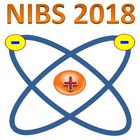Conveners
11th session
- Olli Tarvainen (STFC Rutherford Appleton Laboratory)
Dr
Seth Veitzer
(Tech-X Corporation)
06/09/2018, 09:00
Fundamental processes and modelling
Oral
Negative hydrogen ion sources are widely used to produce neutron beams, relevant to both accelerators and fusion devices. There are a number of different kinds of negative hydrogen sources in use today, including inductively coupled plasma sources (ICPs). For instance, coils external to the ion source chamber can be designed to deposit power into hydrogen plasmas to create highly excited...
Dr
Andrew Hurlbatt
(Max-Planck-Institut für Plasmaphysik)
06/09/2018, 09:30
H– and D– sources for fusion, accelerators and other applications
Oral
For the continued improvement and development of large negative hydrogen ion sources for NBI applications, beam characterisation is of critical importance for understanding and predicting the interaction of the beam with, for example, a gas neutraliser system. The relationship between the results of beam diagnostics and the physical properties of the beam is not a trivial one, and a full...
Mr
Max Lindqvist
(Keio University)
06/09/2018, 10:00
H– and D– sources for fusion, accelerators and other applications
Oral
$\:\:\:\:\:\:$Development of $H^-$ ion sources which can produce high beam intensity with a small beam divergence angle is useful in plasma heating systems for magnetic fusion reactors and accelerators for high-energy physics. Since one of the main requirements for the extracted particle beam in Linac4 $H^-$ ion source is to minimize the beam divergence and emittance, it is of vital importance...

